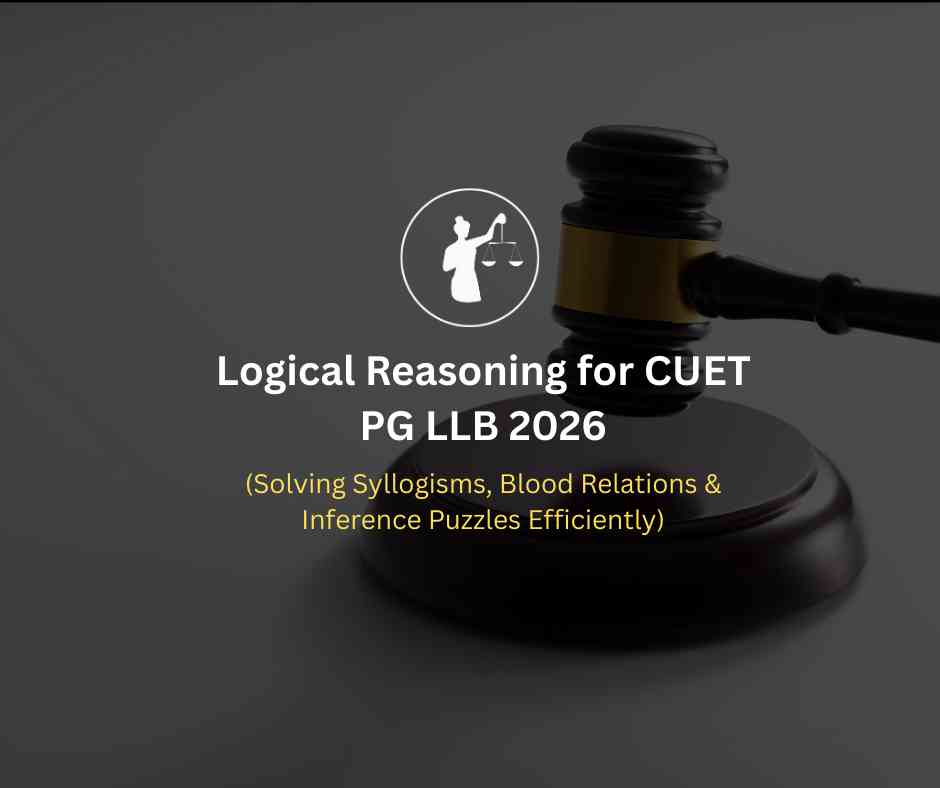
The CUET PG LLB logical reasoning section is one of the most scoring yet tricky parts of the cuet pg logical reasoning syllabus. It tests your ability to think critically, recognise patterns, and apply reasoning techniques to reach correct conclusions. Topics such as syllogisms, blood relations, and inference-based puzzles often carry significant weight in the exam. Mastering these areas with the right approach can give you a crucial edge over competitors.
This guide provides a step-by-step breakdown of cuet pg llb logical reasoning preparation, time-saving strategies, and examples to help you solve questions efficiently and accurately.
CUET PG DU LLB ONLINE COACHING
Logical reasoning forms a core part of the cuet pg logical reasoning paper pattern.
Accuracy and speed are equally important negative marking makes guesswork risky.
Understand the basic forms: All, No, Some, Some Not.
Use Venn diagrams to visualise relationships quickly.
Watch out for possibility cases (e.g., "Some A can be B").
Practice converting statements into logical symbols before solving.
Example: Statements: All books are pens. Some pens are pencils. Conclusions:
Some pencils are books.
Some pens are books.
Solution: Only conclusion 2 follows (using Venn diagram logic).
Identify gender from statements (e.g., "son" = male).
Determine generation level (parent, child, grandparent).
Draw a quick family tree for clarity.
Apply elimination removes impossible links.
Example: Statement: Pointing to a woman, Ravi said, "She is my mother’s brother’s wife." Solution:
Mother’s brother → maternal uncle.
Uncle’s wife → maternal aunt. Answer: Maternal aunt.
Read all statements carefully before looking at the options.
Underline key data points and relationships.
Test each option against given facts reject false ones immediately.
Avoid assumptions beyond the given information.
Example: Statement: All athletes are disciplined. No disciplined person is lazy. Inference: No athlete is lazy. Correct follows from the given premises.
Read More: Section-Wise Time Allocation Strategy for CUET PG LLB 2026
Misinterpreting relationship terms in blood relation problems.
Ignoring possibility-based conclusions in syllogisms.
Making assumptions in inference questions beyond the provided facts.
Revise core concepts of syllogisms, blood relations, and inference puzzles.
Use shortcuts such as Venn diagrams, family trees, and elimination methods.
Maintain speed + accuracy balance to maximise your score in cuet pg llb logical reasoning.
A consistent practice schedule with timed mock tests will ensure that you can confidently tackle any cuet pg logical reasoning question type in the exam.
Q1. How important is the logical reasoning section in CUET PG LLB 2026?
Logical reasoning carries significant marks and is often a tie-breaker for top ranks. A strong cuet pg llb logical reasoning score can greatly boost your overall result.
Q2. What is the best way to prepare for syllogisms in CUET PG LLB?
Learn statement types, practice Venn diagrams, and focus on possibility cases. These are high-frequency topics in cuet pg logical reasoning.
Q3. How do I improve speed in blood relation questions?
Draw quick family trees and use generation-based grouping. Avoid solving entirely in your head.
Q4. Are inference puzzles difficult in CUET PG LLB?
Not if you practice regularly. Most follow logical elimination patterns, making them predictable once you are familiar with common structures.
Q5. How much time should I spend on logical reasoning in the CUET PG LLB exam?
Ideally, 25–30% of your total exam time, adjusting based on your accuracy in practice tests.





